
7 Towns On The Chesapeake Bay That Were Frozen In Time
Spanning over 200 miles and touching six states, the Chesapeake Bay is the largest estuary in the United States. This vast watershed has served as a backdrop for colonial settlements, naval battles, and burgeoning industries that have shaped the nation. Its extensive shorelines, quiet coves, and thriving ports make the Chesapeake Bay an ideal place for exploring towns that have stood still in time.
The maritime village of St. Michaels with its rich shipbuilding heritage and the quiet streets of Onancock, where Victorian and Colonial architecture provides a window to the 17th century are like portals to the past. Join us on an exploration that not only celebrates the bay's history but also invites visitors to experience it firsthand through museums, antique shops, and waterfronts that tell the ongoing story of the Chesapeake Bay.
St. Michaels, Maryland
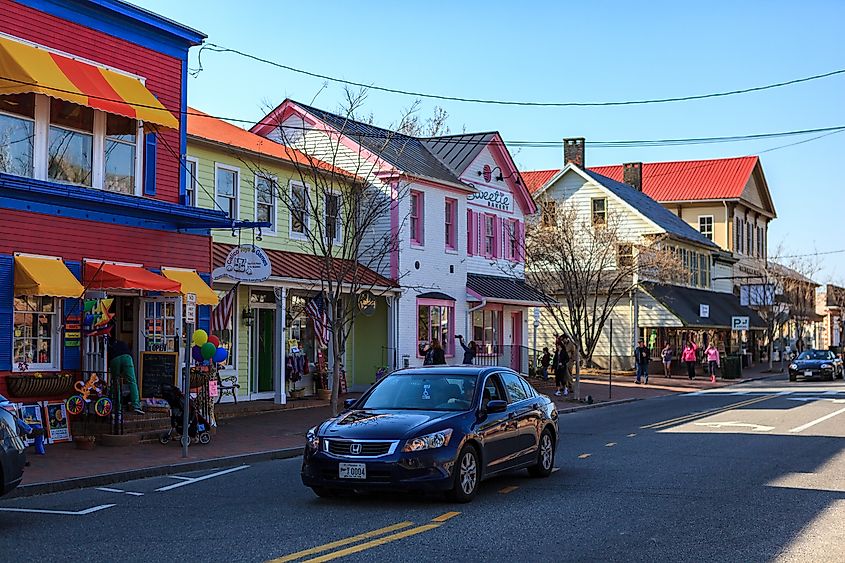
St. Michaels is on the eastern side of Chesapeake Bay. This town, established in the mid-17th century, famously deceived British forces during the War of 1812 by hanging lanterns in trees outside the town, causing cannons to overshoot their targets—a clever ruse that earned it the moniker "the town that fooled the British." Today, St. Michaels preserves this rich history, with its old buildings and narrow streets providing a tangible link to its storied past. Among these is the Chesapeake Bay Maritime Museum, located directly on the waterfront, which houses exhibits on the Bay's history, culture, and ecology, including a working boatyard where visitors can see traditional skills in action.
The St. Michaels Museum at St. Mary’s Square delves into local history with exhibits that detail the town's development and its role in regional and national history. For a taste of the local flavor, The Crab Claw Restaurant offers seafood freshly caught from the Chesapeake Bay, served in a setting that looks much as it did decades ago. A stroll down Talbot Street, the main thoroughfare, reveals a variety of antique shops and local boutiques housed in buildings that date back to the 19th century, such as Simpatico, Italy’s Finest, which specializes in Italian wines and delicacies. For those looking to experience the natural beauty of the area, a kayak tour from Kayak St. Michaels provides a unique vantage point of the town from the water, highlighting both the serene environment and its bustling past as a colonial port.
Chestertown, Maryland
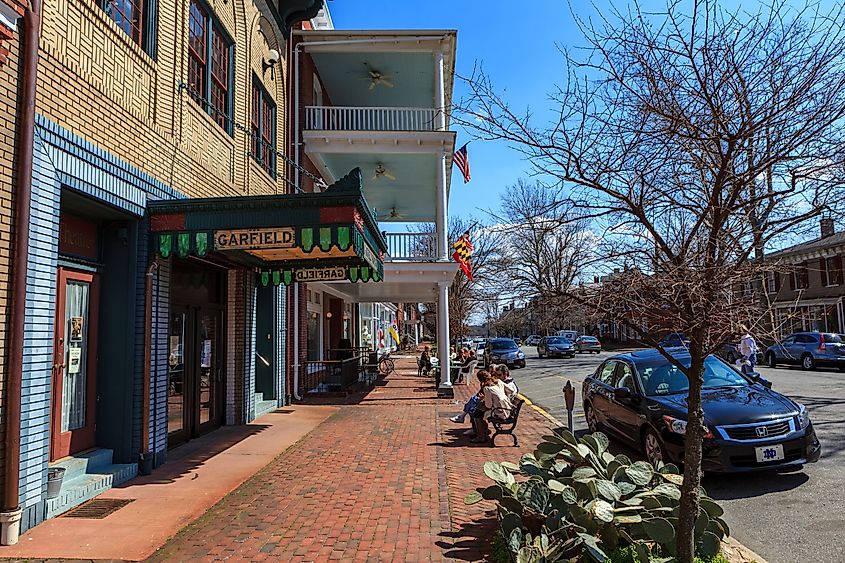
Chestertown, perched along the banks of the Chester River on the Eastern Shore, holds a pivotal place in American history. Founded in 1706, it became a significant port of entry during colonial times, and its well-preserved 18th-century architecture reflects its prosperous past. Notably, Chestertown is home to Washington College, the tenth oldest college in the United States and the first institution of higher learning established in the newly independent nation, chartered in 1782 with George Washington’s support and a direct investment of 50 guineas.
The Chestertown Historic District encompasses the entire downtown area, where visitors can admire colonial homes and buildings that have stood the test of time. One of the most anticipated annual events is the Chestertown Tea Party Festival, commemorating the local resistance to British tea taxes in 1774 with reenactments, a parade, and a symbolic tea toss. For dining, The Kitchen at the Imperial offers fine meals in a historic setting, serving local specialties in one of the town’s oldest buildings. Art enthusiasts will appreciate the Carla Massoni Gallery, which features contemporary art in a space that seamlessly blends historic architectural details with modern aesthetics. Moreover, the Garfield Center for the Arts at the Prince Theatre stages a variety of live performances in a restored 1920s building, providing cultural entertainment that resonates with the town’s rich history.
Onancock, Virginia
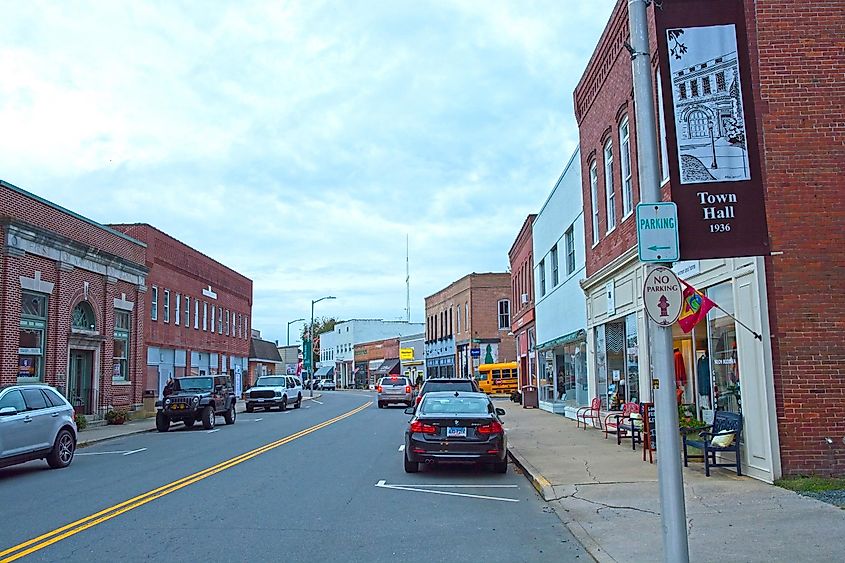
Onancock, located on the Eastern Shore of Virginia, is a town with over 300 years of history. Founded in 1680, it originally served as a major port for agricultural and seafood exports, shaping its development and historical significance. The town’s layout, with its narrow, tree-lined streets, reflects its colonial past, providing a scenic backdrop that seems almost untouched by time. One particularly notable landmark is the Ker Place, a stately Federal-style mansion built in 1799, now preserved as a museum operated by the Eastern Shore of Virginia Historical Society. This museum showcases period furnishings and offers a glimpse into the refined lifestyle of its original occupants, the prosperous Ker family.
The North Street Playhouse offers regular theatrical productions in a cozy, intimate setting, providing entertainment that enriches the town’s cultural landscape. For dining, Mallards at the Wharf sits right on the waterfront, where patrons can enjoy local seafood specialties like blue crab and oysters in a building that has served as a seafood warehouse since the 1940s. Additionally, the Historic Onancock School, now converted into an arts and community center, hosts workshops, art exhibitions, and community events, fostering a creative environment that bridges the town's historical charm with contemporary pursuits. Those interested in outdoor activities can explore the Onancock Creek via kayak or canoe rentals from Southeast Expeditions, which also offers guided tours that highlight the area’s natural beauty and its historical significance as a bustling colonial port.
Smithfield, Virginia
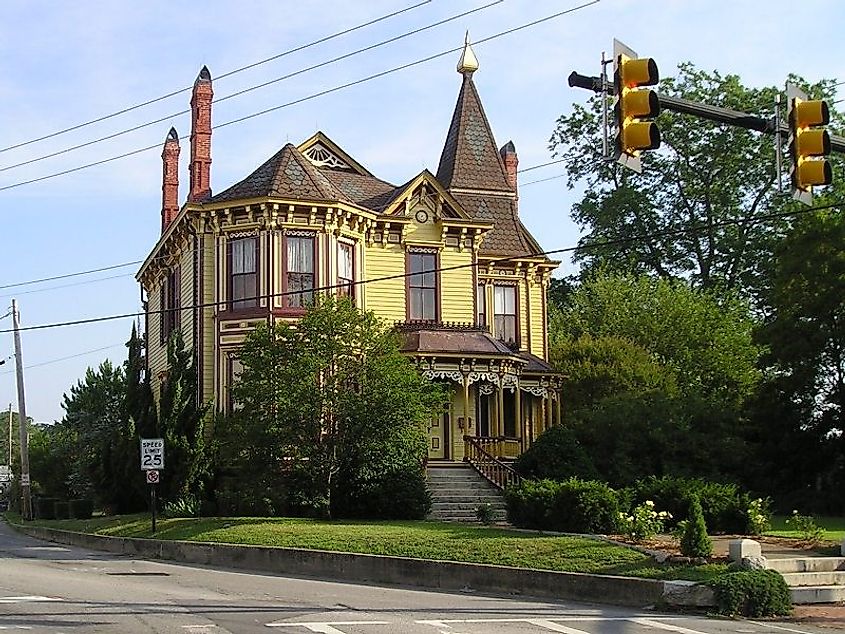
Smithfield is a quintessential historic town along the Pagan River in Isle of Wight County, renowned for its Southern charm and being the ham capital of the world. Established in 1752, Smithfield's rich history is palpable in its beautifully maintained Victorian and Colonial architecture, particularly evident along its Main Street. The town's connection to the iconic Smithfield ham is celebrated at the Isle of Wight County Museum, which features the world's oldest ham, cured in 1902 and still preserved today.
The 1750 Isle of Wight Courthouse, one of the oldest courthouse buildings in the United States, represents a direct link to the town’s colonial past and serves as a poignant reminder of the legal and civic practices of early America. Visitors looking to enjoy local cuisine can dine at Smithfield Station, where the menu features dishes incorporating the famous Smithfield ham and offers views of the scenic river. Just a short walk from the courthouse, Windsor Castle Park provides a lush, green space with walking trails that wind through the restored native wetlands, showcasing the area’s natural beauty alongside its historical sites. Additionally, art enthusiasts will appreciate a visit to the Smithfield Cultural Arts Center, housed in a restored early 20th-century Christian church, which now hosts art exhibits and workshops that engage the local community and visitors alike.
Solomons, Maryland
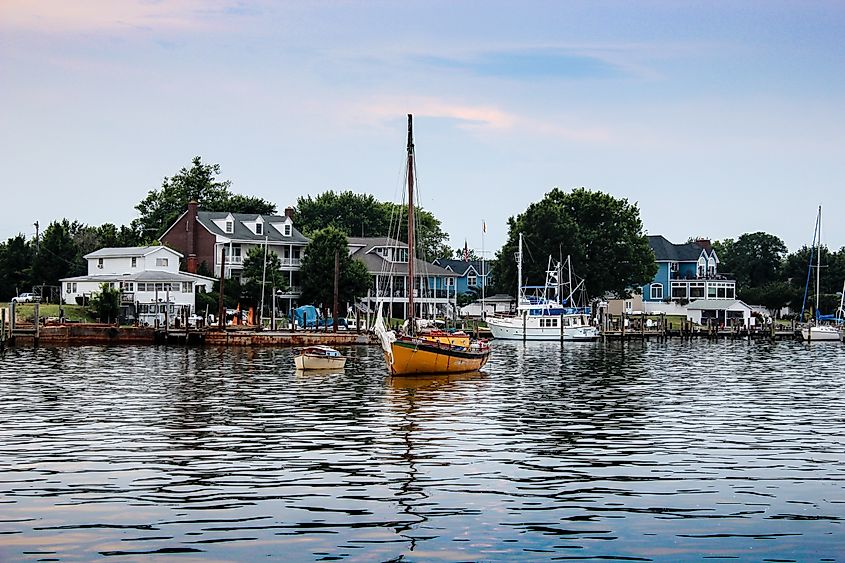
Solomons is a picturesque waterfront village situated at the mouth of the Patuxent River on Chesapeake Bay. This small community, once known as Bourne's Island in the 1600s, later as Somervell's Landing, and finally named after Isaac Solomon, who set up a profitable oyster-canning facility on the island in the 1860s, has a maritime history that is deeply embedded in every aspect of its current day atmosphere. The historic significance of Solomons is most apparent at the Calvert Marine Museum, which offers comprehensive exhibits on the area’s natural and cultural history, including displays of fossils from the Miocene era, indigenous artifacts, and interactive exhibits detailing the oyster industry that once thrived here.
The Annmarie Sculpture Garden & Arts Center, affiliated with the Smithsonian Institution, features a walking path lined with works by artists from all over the nation and offers a serene setting for reflection amid art and nature. Dining at the historic Tiki Bar, which opened in 1967, gives visitors a taste of local flavors with a backdrop of the Solomons Island harbor, providing an ideal spot for watching boats and sunset views. Additionally, for those looking to explore the waters, Solomons Island Boat Rentals offers the opportunity to rent a boat for a day on the bay, giving a firsthand experience of the area's natural beauty. Whether strolling along the Riverwalk to enjoy waterfront views or exploring the local shops and galleries that line the streets, a visit to Solomons is a step back in time to a slower pace of life.
Crisfield, Maryland

Crisfield, known as "The Crab Capital of the World," is situated on the Tangier Sound, an arm of the Chesapeake Bay. This small town, originally called Annemessex Neck during colonial times, was renamed after John W. Crisfield, a local railroad promoter in the 19th century, which highlights its transformation from a sleepy fishing village to a bustling seafood hub. Crisfield's history is deeply intertwined with the seafood industry, particularly the harvesting of blue crabs, oysters, and clams, which has shaped its cultural and economic development. The J. Millard Tawes Historical Museum offers insights into this rich maritime heritage, showcasing exhibits on the town’s reliance on the Chesapeake Bay and its resources.
The Crisfield Dock, a central gathering spot, hosts the annual National Hard Crab Derby, an event that features crab races, cooking competitions, and local craft displays, providing a festive atmosphere that celebrates the town’s crabbing culture. Dining options such as Watermen’s Inn offer a taste of local cuisine with dishes featuring freshly caught seafood from the Chesapeake Bay. For a unique experience, visitors can take a ferry from Crisfield to Smith Island, Maryland's only inhabited offshore island, which provides a glimpse into a way of life that has remained largely unchanged for centuries. Additionally, Janes Island State Park offers outdoor enthusiasts opportunities for kayaking, canoeing, and observing wildlife in a pristine salt marsh environment.
Havre de Grace, Maryland
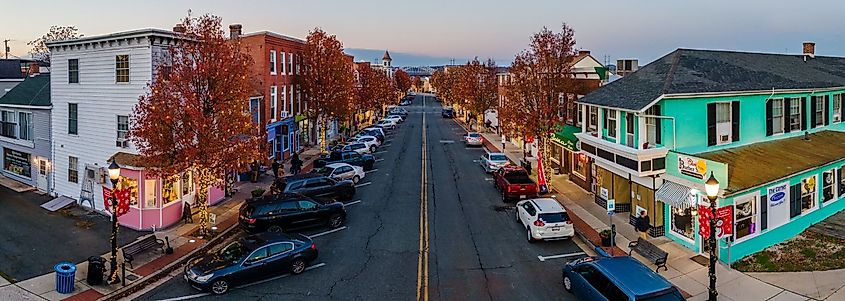
Havre de Grace, located at the confluence of the Susquehanna River and the Chesapeake Bay, is named after the French city Le Havre when surveyed during the Revolutionary War. It was once considered for the nation's capital due to its strategic location. This heritage is palpably woven through the town's architecture and historic sites, including the Concord Point Lighthouse, which has stood since 1827, guiding mariners safely through the local waters. The town's vibrant past is also commemorated at the Havre de Grace Decoy Museum, where visitors can delve into the art of decoy carving, a significant local craft that reflects the area's deep-rooted waterfowling culture.
The Lock House Museum, situated along the Susquehanna and Tidewater Canal, offers insight into the 19th-century canal operations that were crucial for regional trade. For a taste of local flavors, The Tidewater Grille provides a waterfront dining experience with sweeping views of the Chesapeake Bay, serving dishes that highlight the bounty of the local waters. A stroll through the downtown area reveals beautifully preserved buildings now housing boutique shops and eateries, such as the cozy Laurrapin Grille, known for its sustainable, locally-sourced menu. For those looking to enjoy natural beauty, the Havre de Grace Promenade offers a scenic walk along the waterfront, perfect for viewing wildlife and ships.











